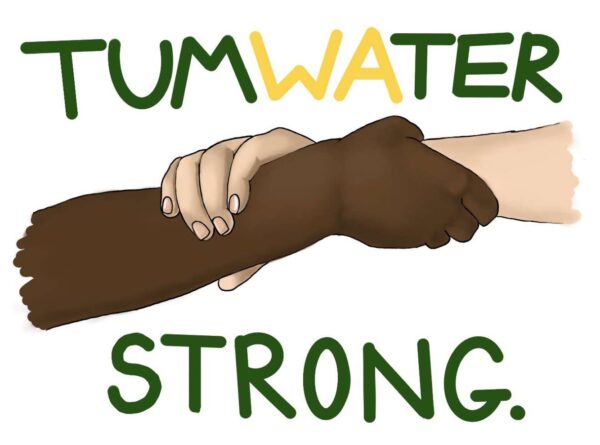A few weeks ago, I had one of those days. One of those “online teacher during a global pandemic” days. A day where I feel like I’m putting on a one woman show with creative enthusiasm, but no one in the audience can even muster a pity laugh. Even worse, more than a few attendees leave early, letting the door bang shut on their way out, not even waiting for intermission.
After three, one hundred minute Zoom meetings on a Monday, the last thing I want is to do is stay signed on for another one. But, it’s Equity Team, and though part of me wants to shoot an email about the migraine that is very likely forming behind my eyes, I love this group and I am passionate about our work, so I don’t.
Besides, this is the day we have invited students to join us for the first time…
For five years, the equity team has been a bit of a sacred space. We get vulnerable with one another, share experiences of unpacking our own biases, dig into academic studies, and plan professional development to better our school culture. We’ve faced some pushback from our staff, but we’ve persisted and made progress.
Because of the relationships we’ve formed within this team, we were a little wary about inviting students. We seek their feedback in a variety of ways, but something about inviting them into where we, for example, brainstorm how to deal with student outrage over a Black Lives Matter sign, seemed risky.
But, nevertheless, we decided that our uncertainty or fear couldn’t be greater than the importance of student voice in this work .So, we invited students to learn, lead, and co-create with us. We didn’t want this to feel like another class. In fact, we hoped that, if we do this right, we will listen more than we talk.
In matters of educational justice, nothing matters more than our students.

So, on this tired Monday, I start our meeting, and I desperately want these students to feel safe, welcome, and heard. Best case scenario? They want to keep coming back. Worst case? They feel like it’s a waste of their time, or they don’t feel comfortable speaking their truth.
We begin by building community and setting the intention for our group. After months of my Zoom classroom’s black squares, their faces and voices automatically fill me with energy. Within minutes, we are digging into politics in the classroom, and I can see the awe in my colleagues’ eyes, just as I feel it in the goosebumps up my arms.
In just under an hour, they explore each topic with astute observations and empathetic honesty.
They tackle the hierarchy of the student body and the isolation many of them feel when they speak out.
“The so-called popular kids tend to be in larger groups and have more connections to people, it makes it hard to speak up…It might feel like one against a thousand.”
They explore the use of derogatory language, what it means to be neutral in the face of injustice, and how teachers should handle sensitive subjects in the classroom.
“Schools should stop white washing the curriculum. Many times schools will candy coat history that happened in the past in order to not make people uncomfortable. Now more than ever the truth matters more than comfort.”
They even dream big and imagine the true purpose of education.
“I think if schools can change to meet hybrid standards and curriculum it shouldn’t be hard to add some diversity rather than keep repeating lessons yearly.”
In such a short time, and on our first meeting, these students wrestle with topics that most adults I know shy away from, reminding us of both the who and the why of our work.
What some educators call “too divisive,” these students see as honoring our shared humanity.
What some textbook creators see as “common core,” they see as a status quo worth disrupting.
What some parents say is “too political,” they see as necessary as internet during a pandemic.
***
When the clock says it’s time to wrap up, each student tells us they want to come back, much to my relief. Someone has even decided that we need tee-shirts (The Equity Avengers!)
After they leave, a few of the adults stay on, wide eyed and absolutely beaming. Our heads are spinning and our hearts are full.
Wow! Can you believe this? Did you hear that? Where do we go next?
This meeting wasn’t magical, though it certainly felt that way. These brilliant students sharing didn’t automatically end systemic racism or bias in our schools. But, they inspired us more than we thought possible. Their vision for a better school, and better world is part of our mission to bring to fruition.
We still have a lot of work to do, but one thing is clear: the one question on all of our minds. Why didn’t we do this sooner?
Pingback: Student Equity Summit | Stories From School
It’s so great to see students passionate for something. I would love to hear about the next steps that you will be taking with this group of students. Also, I think it is important to expose students to a diversity of opinions so that they know how to react when someone says something they fundamentally disagree with. I agree with Janet that we need to teach our students how to treat all people with civility and to hear them out even when we don’t agree with them.
Students can tell us so much about the reality of school.
Think about the rest of their lives and what will be most important–math or science or literature (as hugely important as they are)? Or becoming decent human beings who know how to treat each other with respect and know how to promote justice?
I think we need to teach more history, not less. More civics–and civility and civic engagement.
Thanks for sharing, Emma-Kate!